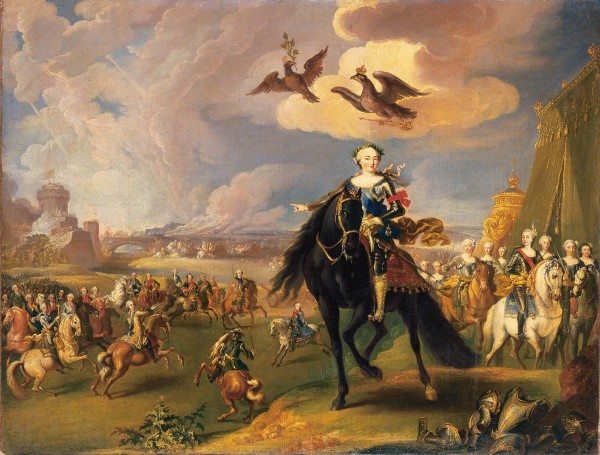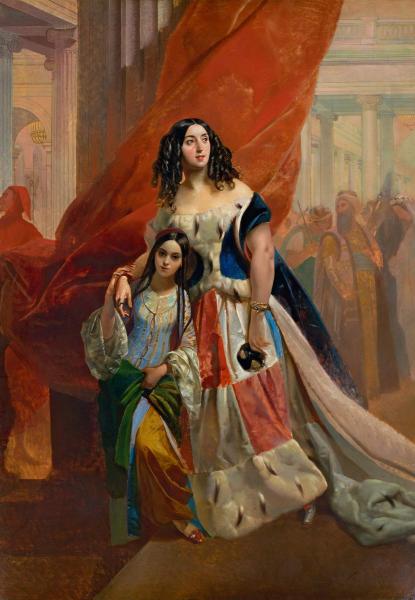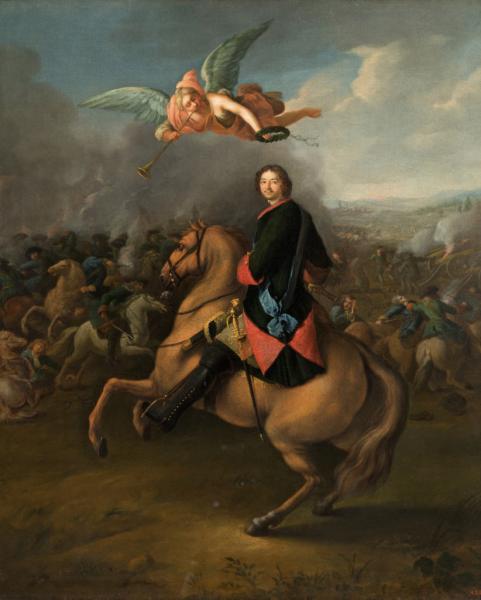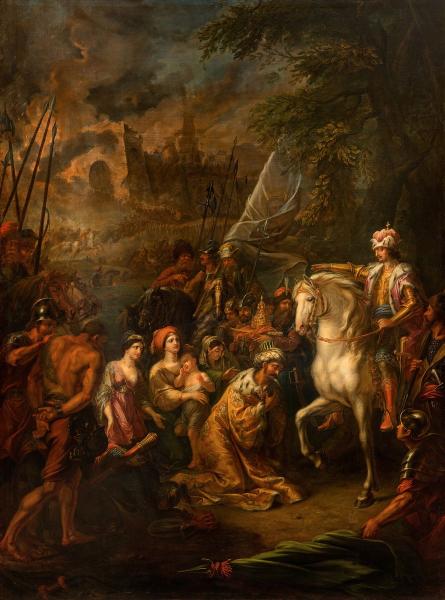The artist is Penner

+ Virtual excursion &Laquyagilev. START&Raquo >>>
– Hide the text of a virtual tour &Laquyagilev. START&Raquo
Among the portraits of the middle of the 18th century, the organizers of the Tauride exhibition paid great attention to the works of the era Elizabeth Petrovna. This was affected by personal addictions. Especially Alexander Benois, since childhood enthusiastic about the art and culture of the Elizabethan time, which was reflected in his works of art and literary works.
For twenty years the reign of Empress Elizabeth Alekseevna, beloved daughter of Peter the Great, lasted. Dozens of her picturesque portraits were created by court masters. As if we are leafing through the book of human life, considering these works. Here is a young, 34 -year -old Elizabeth, dressed in a men’s dress, so walking to her slender figure, looks at us from a portrait of the fashionable painter Louis Caravak. A tender face has not yet lost its youthful charm, the gaze of the radiant eyes gives out the natural liveliness of the mind. She is talented and unusually good, she is the true daughter of her father and Russia rightfully entrusted to her by God into complete rule.
As a great -minded empress, the true defender of his Fatherland, Elizabeth appears in the work of Georg Pornev – an allegorical group portrait that glorifies the peaceful eastern policy of Russia. Dressed in military armor with all the royal regalia, it sits on horseback surrounded by her retinue. In the background – a siege scene with Russian troops of the Turkish fortress. Two eagles hover over the head of the Empress: one in the crown and with a scepter, the other has the Empress’s golden monogram on the head, in the beak – an olive branch – a symbol of the world. On the left – the horse group of the nobleman, led by Grand Duke Peter Fedorovich, proclaimed the heir to the throne. On the right, the horse-owned state, including the Grand Duchess Ekaterina Alekseevna, who recorded her first impressions of Empress Elizabeth in 1745: “Verily, then it was impossible to see for the first time and not be amazed at her beauty and majestic posture. It was a woman of tall, although it was very complete, but not at all lost … She danced perfectly and was distinguished by a special grace in everything she did the same in the male and female outfit … “.
In 1752, Caravak will write another portrait of Elizabeth Petrovna. He captures her dressed in a black masquerade domino with a mask in his hand. Graceful and romantic, majestic and solemn – she is still beautiful in her 43 years.
Elizaveta Petrovna did not become an ideal empress, and did not claim it. Without the experience of managing the state, she conveyed the decision of important affairs to her favorites, which, however, did not spoil the overall picture – not adventurers, but representatives of Russian noble surnames, who were by no means not indifferent around Elizabeth.
E.AT.Amphilokhiev, e.AT.Stankevich and N.AND.Fedorova. Materials for a virtual tour of the exhibition "Diaghilev. Start". 2009
Go to the beginning of the virtual tour “Diaghilev. START”
Elizaveta Petrovna (1709, Kolomenskoye − 1761 /1762, St. Petersburg) − Russian Empress (from 1741).
The daughter of Emperor Peter I and Ekaterina Alekseevna (before baptism in Orthodoxy – Marta Skavronskaya). It was considered illegitimate, but after the official marriage of parents in 1712, she began to wear the title of Cesarevna. In 1741, she ascended the throne as a result of the palace coup, which was supported by the company of the Life Guards of the Preobrazhensky Regiment. Waged successful wars with Sweden and Prussia. Domestic policy was characterized by the expansion of the rights of the nobility to land ownership and peasants. At the same time, the death penalty was canceled and the torture practice was weakened.
Elizabeth was famous for its beauty, cheerful disposition, love of luxury and amusements. Her wardrobe totaled up to 12 thousand dresses. The tastes of the empress and her favorites, distinguished by wide education, contributed to the development of arts and education. A network of elementary schools was expanded in Russia, military educational institutions were reorganized, the first gymnasiums were opened, and Moscow University was founded in 1755. Since 1757 in St. Petersburg, the “Academy of three noble arts” began its work. The capital and its suburbs were decorated with magnificent palaces and churches in the Baroque style. The empress, most likely, did not have children. Perhaps she was in a secret marriage with graph a. G. Razumovsky, whom he exalted from the court singers.
Svetlana Moiseeva. Elena Stolbova. Exhibition catalog in Malaga "The Romanov dynasty". 2017. With. 215.
The canvas represents the allegory of the peaceful eastern policy of Russia. Elizaveta Petrovna is depicted in armor, with the orders of St. Andrew the First -Called (ribbon and star) and St. Catherine of the Great Cross (bow from the order tape on the left hand). On the left – the horse group of the nobleman, led by Grand Duke Peter Fedorovich, depicted with the tape and star of the Order of St. Andrew the First -Called. On the right is the equestrian group of Stats-Dame, including the Grand Duchess Ekaterina Alekseevna. In the background – a siege scene with Russian troops of the Turkish fortress. Above the head of the empress, two eagles soar: one in the crown and with a scepter, the other has the Empress’s golden monogram on the head, in the beak – olive branch. (WITH. M.)
Electronic catalog “Heroes and villains of Russian history”. SPb, 2010. With. 206.


